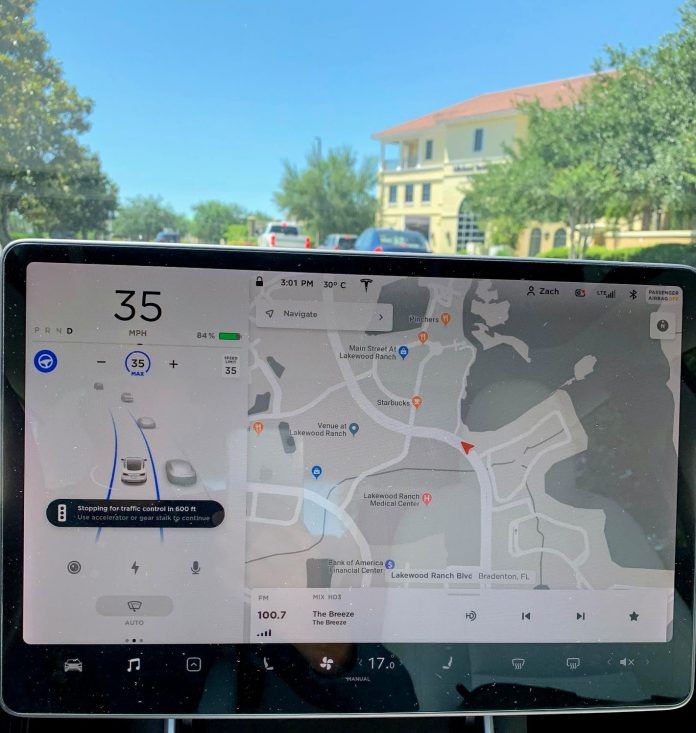August 1st, 2020 by Zachary Shahan
Tesla has released its quarterly “Tesla Vehicle Safety Report.” One of the top reasons — if not the #1 reason — I bought a Tesla Model 3 last was because of its record-setting safety rating, so I’m always interested in seeing new stats on this topic.
The second quarter of 2020 saw a slightly worse result for Tesla than the first quarter in terms of accidents per million miles driven with Tesla Autopilot engaged (see graph below), but keep in mind that the first quarter had a record result. Additionally, the difference was so small that it was probably not statistically significant. On the other hand, Tesla’s Q2 figure was far better than the US average — about 10 times better with Autopilot engaged.
Here are the key statistics:
- 1 accident every 4.53 million miles when Autopilot engaged
- 1 accident every 2.27 million miles when Autopilot not engaged but active safety features active
- 1 accident every 1.56 million miles without Autopilot and without active safety features
- 1 accident every 479,000 miles — US average
Note: The following interactive graph does not display well on many mobile phones. I recommend viewing it on a real computer or at least turning your phone horizontal instead of vertical. Alternatively, you can look at this non-interactive version (but it’s not as much fun as the interactive version).
In other words, on average, nearly 10 times more miles are driven on Tesla Autopilot before an accident occurs than are driven by the average American driver before an accident occurs.
There is something to keep in mind here, though. First of all, Autopilot is more commonly used on longer freeway trips than in city driving, and accidents are much more common in urban driving than on the freeway, especially per mile. Additionally, in general, Autopilot would be engaged in safer driving situations in which an accident is less likely in the first place.
Lastly, the figure for the US average is based on annual data, and accidents are more common in winter. (Naturally, Tesla’s Q2 data doesn’t cover the winter. Although, its record-breaking result in Q1 does.)
Overall, though, 1 accident every 4.53 million miles is far better than 1 accident every 479,000 miles.
In my experience, having Autopilot on does improve safety considerably. You still have to pay attention and make sure you don’t do something stupid, but with Autopilot on, the car is using many more eyes (cameras, radar, etc.) and its rather clever brain to make sure to not hit other cars or objects on the road. Those eyes and the car’s “brain” work very well.
“While no car can prevent all accidents, we work every day to try to make them much less likely to occur,” Tesla writes. “Active safety features come standard on all Tesla vehicles made after September 2014 for an added layer of safety beyond the physical structure of each car. Because every Tesla is connected, we’re able to use the billions of miles of real-world data from our global fleet – of which more than 1 billion have been driven with Autopilot engaged – to understand the different ways accidents happen. We then develop features that can help Tesla drivers mitigate or avoid accidents. Through over-the-air software updates, we’re able to introduce safety features and enhancements long after a car has been delivered, as well as release updated versions of existing safety features that take into account the most up-to-date real-world data collected by our fleet.”
Even if you do get into an accident, Tesla’s vehicles offer the lowest probability of injury, according to NHTSA testing.
Tesla also addresses fires in its quarterly safety reports, presumably due to all kinds of misinformation and overblown cases regarding a few Tesla vehicles that caught fire over the years. However, Tesla just shares annual data for this, so the latest update is regarding 2019. Here it is:
“From 2012 – 2019, there has been approximately one Tesla vehicle fire for every 175 million miles traveled. By comparison, data from the National Fire Protection Association (NFPA) and U.S. Department of Transportation shows that in the United States there is a vehicle fire for every 19 million miles traveled.
“In order to provide an apt comparison to NFPA data, Tesla’s data set includes instances of vehicle fires caused by structure fires, arson, and other things unrelated to the vehicle, which account for some of the Tesla vehicle fires over this time period.”
One of the biggest benefits of a Tesla is indeed the high level safety it provides to its passengers and driver.
Want to buy a Tesla Model 3, Y, S, or X? Feel free to use my referral code to get some free Supercharging miles with your purchase: https://ts.la/zachary63404.
You can also get a $250 discount on Tesla solar with that code.
Have a tip for CleanTechnica? Send us an email: tips@cleantechnica.com
Latest Cleantech Talk Episodes
Latest CleanTechnica.TV Episode






